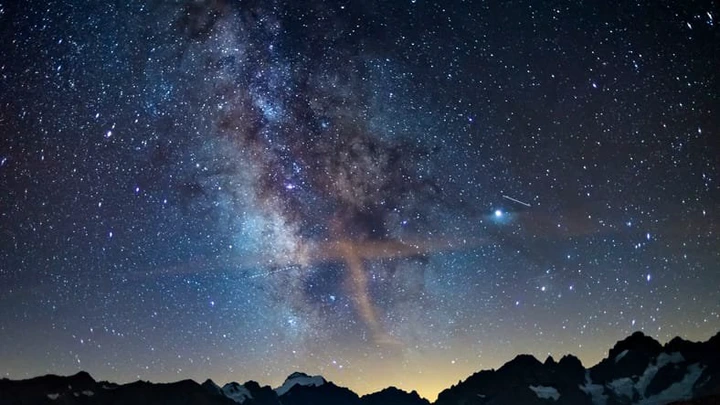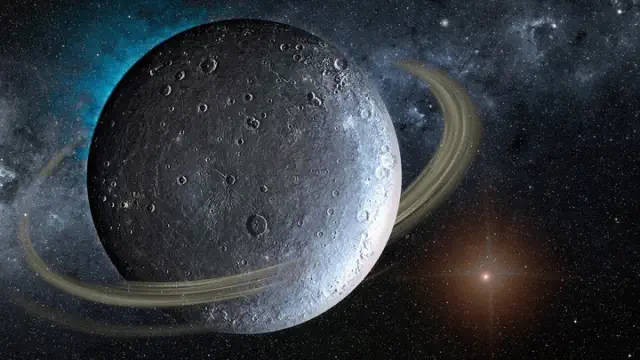
View pictures in App save up to 80% data.
Thanks to NASA's James Webb Space Telescope (JWST), a team of astronomers from the University of Arizona’s Steward Observatory has reached a significant breakthrough in cosmic research.
Through the observation of a galaxy located approximately 6.5 billion light-years away, which dates back to a time when the universe was only half as old as it is now, researchers discovered 44 distinct stars.
This achievement was enabled by gravitational lensing and the light-gathering capabilities of the JWST. As a result, this discovery has established a new record for the highest number of individual stars observed in a distant galaxy.
“This groundbreaking discovery demonstrates, for the first time, that studying large numbers of stars in a distant galaxy is possible,” explained Fengwu Sun, a postdoctoral researcher at the Center for Astrophysics | Harvard & Smithsonian (CfA) and co-author of the study.
Sun elaborated on how previous studies conducted with the Hubble Space Telescope managed to identify around seven stars. Nevertheless, thanks to the enhanced capabilities of the JWST, researchers are now able to observe stars that were once too distant to detect.
This progress is important as it enables researchers to examine dark matter in the lensing areas of galaxies and stars by observing a greater number of individual stars, a feat that was unattainable when only a limited number of stars could be seen.
A group of stars was identified through the analysis of JWST images of a galaxy referred to as the Dragon Arc. This galaxy is situated behind a large galaxy cluster called Abell 370, and the gravitational lensing caused by Abell 370 alters the Dragon Arc's spiral structure, giving it a stretched and elongated appearance.
Through the examination of the star colors within the Dragon Arc, the research team found that a significant number of these stars are red supergiants. This contrasts sharply with earlier studies that predominantly recognized blue supergiants.
The researchers highlighted that this difference emphasizes the JWST's ability to utilize infrared wavelengths, enabling it to detect cooler stars that may have been overlooked by other telescopes.

View pictures in App save up to 80% data.
Sun stated, "Our initial goal was to find a background galaxy that is being lensing-magnified by the galaxies within this enormous cluster, but in the process, we ended up discovering these individual stars."
"However, as we analyzed the data, we discovered what seemed to be numerous individual star points. This was an exhilarating discovery, as it marked the first occasion we could observe such a vast number of distant individual stars."
Galaxies such as the Milky Way generally contain tens of billions of stars, allowing astronomers to examine individual stars in nearby galaxies.
However, the light emitted by stars in galaxies located billions of light-years away tends to merge during its extensive journey to our planet. This phenomenon is exactly what has made it challenging for scientists to comprehend the processes behind the formation and evolution of galaxies.
Yoshinobu Fudamoto, the primary author of the study, explained that while distant galaxies often appear as “diffuse, fuzzy blobs,” these seemingly indistinct formations actually consist of numerous individual stars that current telescopes are unable to resolve.
Recent developments in astronomy have unveiled exciting opportunities thanks to gravitational lensing, a phenomenon in which the intense gravitational force of large celestial bodies enhances the light from distant stars. This effect enables the light from these remote stars to be magnified, making them observable with advanced telescopes.
By conducting further observations with the JWST, researchers aim to discover an even greater number of magnified stars within the Dragon Arc, potentially allowing for the study of hundreds of far-off stars.
Examining these specific stars could enhance our comprehension of the architecture of gravitational lenses and aid in deciphering the enigmas related to dark matter.
To read the study’s complete findings, which have since been published in Nature Astronomy, visit the link here.
More About:News









